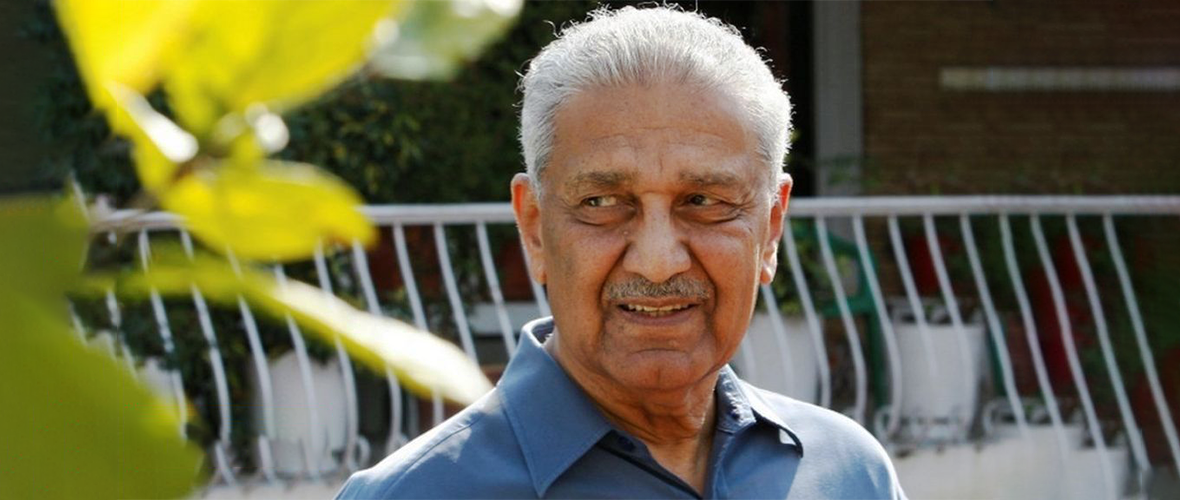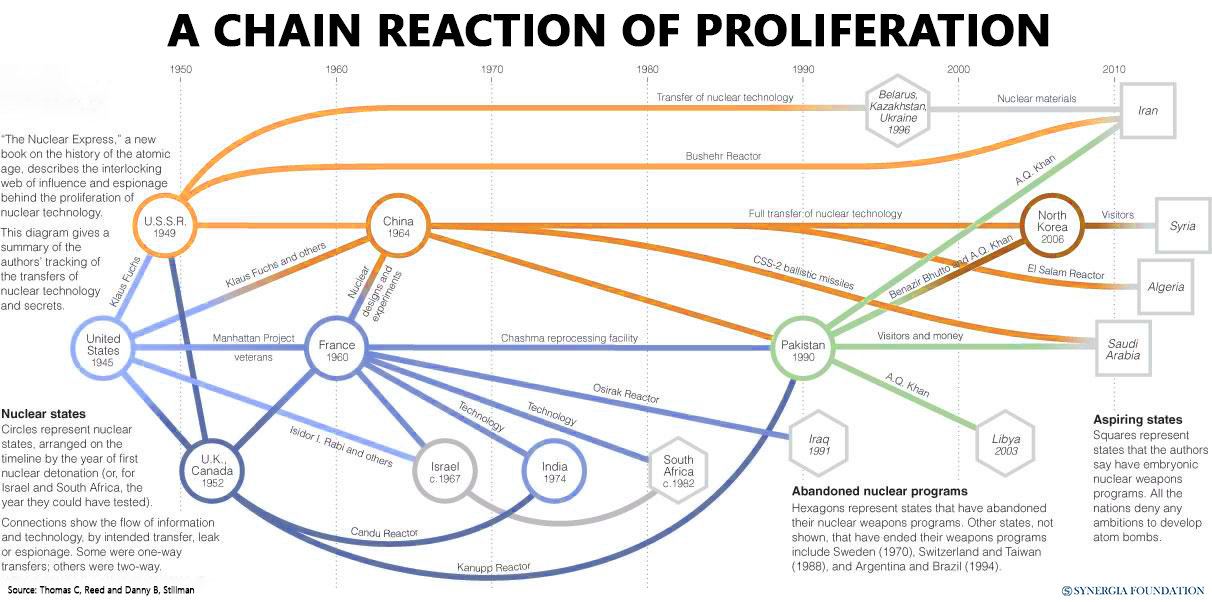The Nuclear Heist
October 22, 2021 | Expert Insights

Idolised in Pakistan as the ‘Mohsin e-Pakistan’ (Saviour of Pakistan), Dr. Abdul Qadeer Khan (1936-2021) was a true maverick who stole the way for his country into the nuclear club of nations. Born in Bhopal, Dr. Khan was an enigma. Unlike the popular image of scientists devising secret weapons of mass destruction who lurk in the shadows amidst a cloak of anonymity, he revelled in public and media attention.
During his lifetime, he had many ups and downs, from a much-revered national icon to a rogue scientist who stole nuclear secrets to sell to other rogue nations like North Korea, a commission he publicly admitted to in 2004. Officially banished from public life and 'confined' to a palatial mansion by the Pakistani deep state, he remained largely obscure till his recent death. He was allegedly reviled by two successive rulers- Nawaj Sharif and General Parvez Musharraf, both of whom were wary of his popularity and charisma and treated him as a potential threat to their position.
Background
Dr AQ Khan was made rather infamous by a Canadian filmmaker named Julian Sher in his documentary titled 'Nuclear Jihad.' As a young man, he had integrated well into European society. Having secured his Masters’ degree in Germany, he did his PhD in metallurgical engineering, finishing his degree in Belgium. He then moved on to Amsterdam to work for the European Uranium Enrichment Centrifuge Corporation (URENCO). It was here that he witnessed India’s first ‘peaceful’ nuclear blast in 1974 and is reported to have been greatly motivated to give his own parent country a matching response. He offered his services to Prime Minister Bhutto, who gave him the go-ahead.
He diligently and surreptitiously started amassing valuable classified data and plans for a bomb-grade uranium centrifuge. When his activities finally began to appear on the radar of local authorities, in a move obviously facilitated by the Pakistani state, he relocated with family to a secure complex in Pakistan's top-secret nuclear facility. He is credited with the creation of the Pakistani Engineering Research Laboratories in 1976, which spearheaded the entire uranium enrichment programme. It later grew to a mammoth organisation with over 10,000 staff and would be later named Khan Research Laboratories. As the uranium demand increased, more sophisticated hardware was needed, and Khan reached out to his European contacts to procure dual-purpose machinery and tools, using shell companies to make his purchases, thus blindsiding the lax European nuclear watchdogs.
All these clandestine, black-market procurements did not come cheap, and Pakistan needed hard cash, in dollars, to finance these deals. Giving total deniability to the Pakistani state, Khan was allowed to negotiate with North Korea, Iran and even Libya, offering designs and tech know-how for centrifuges etc., in exchange for millions of dollars payment. When U.S. nuclear agencies and the UN's International Atomic Agency inspectors found traces of enriched uranium in centrifuges in Iran in 2003, Iran accepted that these had been imported second-hand from Pakistan. Under immense international pressure, Pakistan claimed that it was a rogue operation by AQ Khan, a fact to which Dr Khan publicly confessed in 2004, thus avoiding international sanctions to his country.

Analysis
For the rest of the world, Dr AQ Khan was the epitome of the modern-day nuclear 'thief' who set up an elaborate illicit network to traffic equipment with dual-purpose technology since early 2003 to make his country self-sufficient in nuclear grade uranium. His modus operandi was later studied extensively to bust similar, if not identical copycat operations, launched by other 'wannabe' nuclear rogues.
In their meticulously researched article, “A Tale of Nuclear Proliferation: How Pakistani Built his Network’, David Sanger described how Dr AQ Khan created a uranium enrichment facility by stealing plans of the centrifuge and establishing a black-market network to sell the knowledge to other rogue states. Having exposed AQ Khan and his network, David Sangar was concerned that the network would survive, "What is uncertain here is not only which countries purchased [the technology], but what's left of the network, even with the head cut off? Clearly, there are a lot of elements of the network that can operate by themselves.” The model created by Khan was ideal for other nuclear aspirants to copy, including terrorist groups.
Counterpoint
Within the Pakistani media and scientific community, there were fault lines that seriously cast doubt on Dr. Khans’s role in the Pakistani nuclear arsenal. A prominent journalist, Nazir Naji, claimed that Dr. Khan had limited technical knowledge about nuclear weapons and had a small part in the actual process of designing the nuclear device.
It was assumed then that perhaps while Dr Khan may have successfully smuggled in the hardware and software through his underground supply chain, the actual designing and fabrication was done by other scientists who remained largely in the shadows. The most prominent of these lesser-known nuclear scientists was Dr. Samar Mubarakmand.
Even Khan's colleagues in Pakistani Nuclear Agency were disdainful of his qualification as a metallurgical engineer and pointed that he was not the leader of the team of scientists that exploded the nuclear device in 1998.
Assessment
- Dr Khan showed how a single individual could bypass rules and regulations against nuclear proliferation to successfully create a world-class weapons-grade enrichment facility from scratch.
- His story also highlights the role played by international geopolitics in ignoring the nuclear misdemeanours of certain states when it is politically convenient. Since the early part of the 2000s, the leading western nations, including the U.S., had detected the smoking gun of Pakistani state involvement in the illicit trafficking of nuclear hardware and designs, but due to the compulsions of the global war on terror, it was considered prudent to keep a lid on it, till it was too late.
- The real danger lies in the possibility of the spread of nuclear know-how for a crude but deadly device that can be created through knowledge provided by nuclear workers employed in hundreds of nuclear power plants and establishments worldwide. With the demand for green energy increasing, the number of nuclear power plants will only increase, thus escalating the possibility of leaked plans and data.








Comments